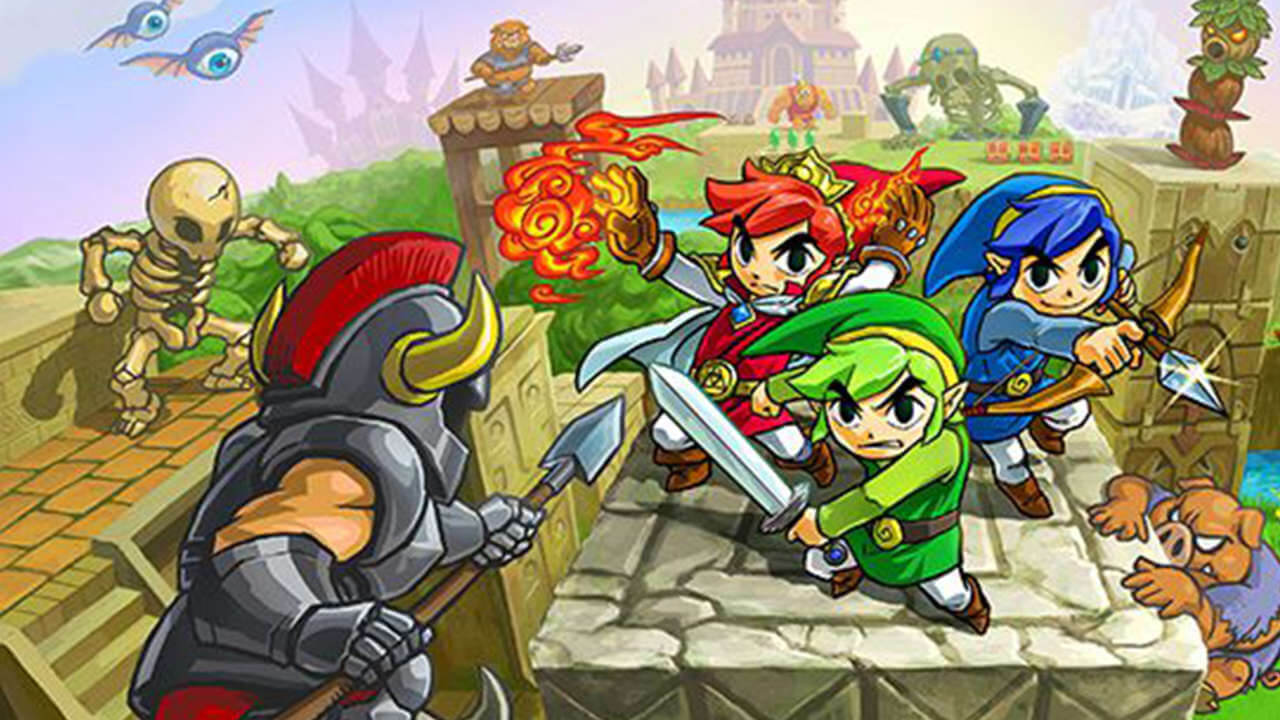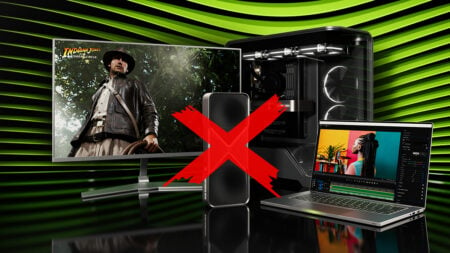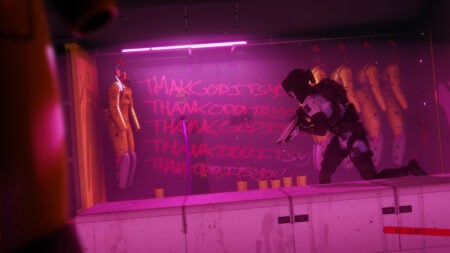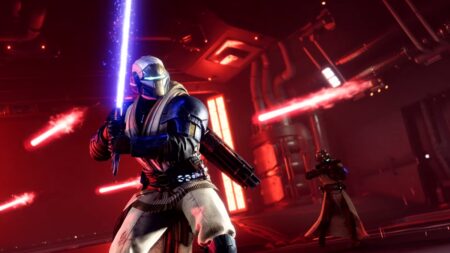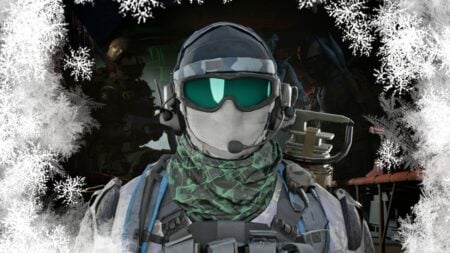Title: The Legend of Zelda: Tri Force Heroes
Available On: 3DS
Tested On: 3DS
Developer: Nintendo
Publisher: Nintendo
Genre: Action-adventure
Official Site: https://www.zelda.com/tri-force-heroes/
Release Date: October 22, 2015
Where to Buy: retail stores, 3DS e-Shop
The Legend of Zelda: Tri Force Heroes, Nintendo’s latest 3DS title in the Zelda series, takes multiple significant departures from past entries in the franchise. It’s the sort of game that, even without the name of Zelda, could easily stand on its own as an entirely separate adventure. With a lighthearted story, solid yet challenging gameplay, and the balance between playing solo or with friends, Tri Force Heroes manages to feel a little like Zelda and a lot like a whole different game.
The kingdom of Hytopia, known for its obsession with fashion, falls under a pall of fear when Princess Styla is cursed to wear a brown body suit that can never be removed. The call goes out for a hero with three important qualities: pointy ears, sideburns, and hair parted at the top. One such individual conveniently resembling Link wanders in and takes the job. The hero ventures out into the Drablands to face its numerous trials and defeat the jealous witch who cursed the princess. It’s apparent right away that the stakes are quite low and the mood is light and carefree, the plot being nothing more than an excuse for the game to exist.

Fashion isn’t just a statement in Tri Force Heroes (see what I did there). By collecting materials, the player can craft a variety of outfits to wear, each of which grants special bonuses in the Drablands. These materials are earned by completing levels, and the player only gets one at a time. This means that to acquire more, multiple trips to the same areas are required. Many times the best outfits for certain missions require materials from those stages, making it rare that the player first goes into a level with the best outfit for the job.
Additionally, in single player mode, only the green hero can even wear an outfit. This isn’t typically a problem, but it seems like sort of a punishment for playing the game by oneself. In most cases, though, it isn’t even necessary to wear any outfit. They serve as convenient bonuses more than anything and don’t play as integral a role as they could have.
Those aforementioned departures from past Zelda games are immediately obvious after the first outing. The player is given nine hearts that are shared collectively among the three heroes, and no heart containers appear throughout the game. Also, dungeon items are given towards the start of each area and are not kept after exiting. There are always three items, one for each hero, and those three aren’t always the same item.

Similar to A Link Between Worlds, items consume energy from a gauge upon use, and the gauge steadily refills. In multiplayer, this leads to the players assigning roles among themselves. In single player, it doesn’t matter which hero takes which item, as it is possible to switch between them at will on the touch screen. Doing so also serves as a defensive tactic, as the Doppels that aren’t being controlled cannot be harmed by enemies. They can, however, be pushed into pits. If this happens, one heart is lost for each hero that falls.
Having three characters at once means even a solo player can easily multitask or combine their powers. Tri Force Heroes‘ main gimmick is having the three lift each other to create a totem pole. The hero on top uses his sword to attack high-up enemies and his item to trigger equally high-up switches. In this form, the bottom hero is responsible for movement, the top hero for fighting and puzzle-solving, and the middle hero’s only function is to throw the top hero onto high ledges.
By using this mechanic consistently throughout, Tri Force Heroes fosters an air of cooperation among players, as opposed to competition to see who can get the most rupees. No other player formations are present, but the game makes very good use out of just the totem and presents a surprisingly large number of unique ways in which to utilize it.
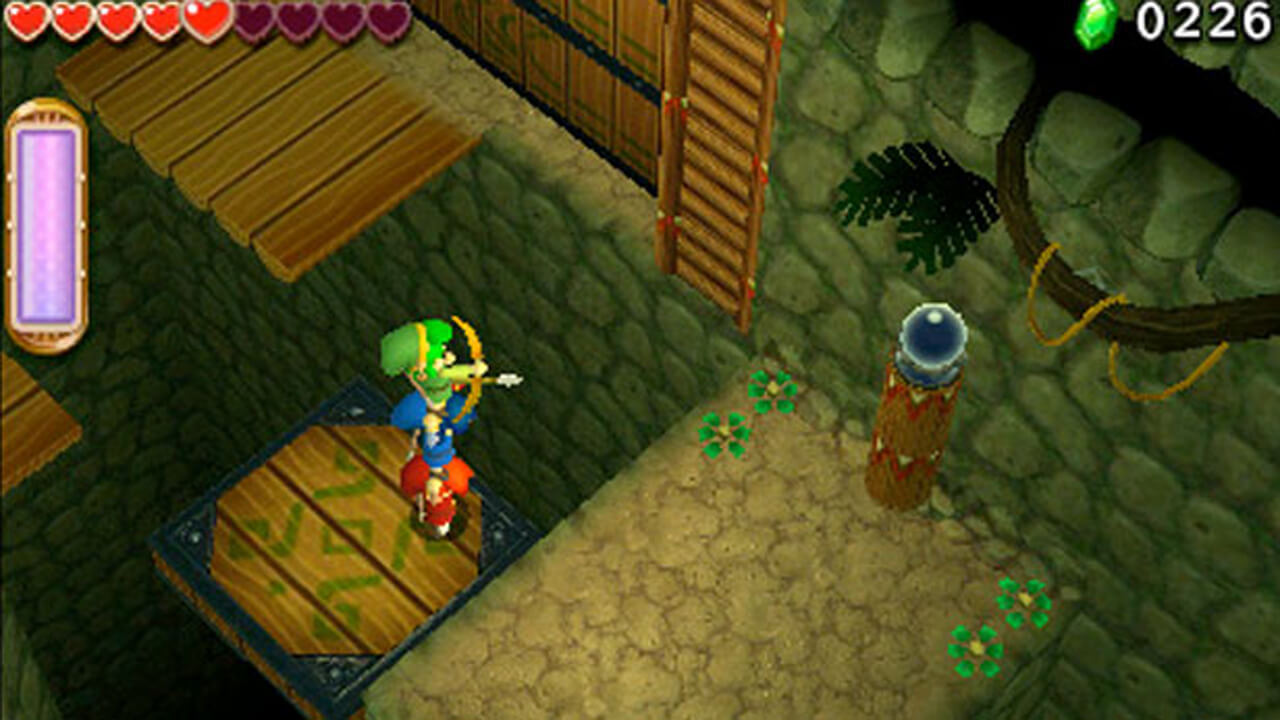
The Drablands are divided into eight main regions, each with four levels consisting of four stages each. Stages are played sequentially without a break and focus on either puzzle solving, combat, or both. Encounters with minor enemies typically present a variety of options for victory, as the “dungeon item” isn’t always the only way to destroy one’s foes. In fact, a single hero is often all that is needed to clear a whole group of baddies. A ninth region is also unlocked early on and allows the player to take on a series of difficult challenges in a gauntlet run.
Boss battles, particularly the temple bosses in the final area, are more complicated and often require thinking on one’s feet. Dungeon items are almost always necessary here, as well as “toteming” up to reach weak points. It is for these sequences that teaming up with other players makes the going much easier, but switching between the heroes in solo mode and still winning is very possible. Sometimes a single character can handle a boss without help, but doing so is always much more difficult.

The element that really shines in Tri Force Heroes is the puzzle mechanic. The game forgoes any manner of hand-holding and fully expects the player to be able to reason things out on his or her own. This is quite nice in an age where friendly games like this have a habit of succoring them to death. But these aren’t the simple press-switch-to-open-the-door puzzles, at least not for the most part.
Players will find themselves figuring out ways of getting all three characters onto a high ledge while making sure each one is in the correct place at the correct time. Once again, multiplayer is wonderful here, especially for those moments when every second count but is by no means necessary. In fact, conquering puzzles single-handedly create a feeling of accomplishment and a well-earned deep breath. The puzzles are just that creative and challenging.
The downside to having only the totem mechanic to work with and no real permanent upgrades is that, even with the increase in difficulty and puzzle complexity, the Drablands start to take on a more literal meaning. Completing a region to unlock the next one gives a very little sense of true progression due largely to the fact that players really have nothing to show for their past efforts other than a few new materials. Tough outfits can power up the heroes, most of the time the boon is used to give the player an edge in combat. It would have been nice to have seen some secret areas or alternate solutions to puzzles emerge from more exploration-oriented costumes.
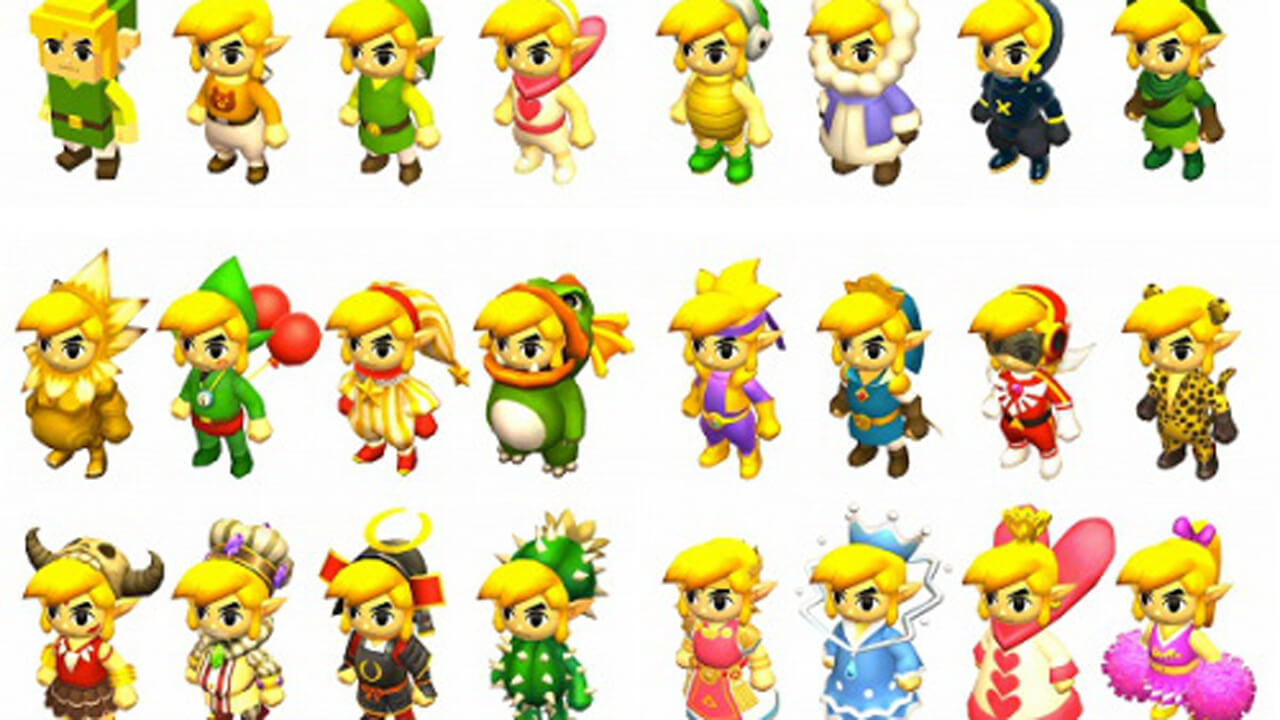
Tri Force Heroes is difficult to summarize in just a few words. It’s a Zelda game that walks the thin line between mainstream and spinoff. The gameplay is challenging and cleverly designed, but often fails to yield adequate reward for players’ efforts, particularly in single player mode. It also seems devoid of the depth of secrets and sidequests that are a key part of what makes a Zelda game a Zelda game, but the engaging gameplay more than makes up for any minor deficiencies.
In short, Tri Force Heroes is a great game in its own right and not utterly unworthy of being an adventure Link would embark on when not busy saving Hyrule. At the same time, it also doesn’t need to be a Zelda game in order to succeed and is more than capable of standing on its own two feet.
- Gameplay: Entertaining and challenging
- Graphics: Comparable to previous 3DS Zelda titles
- Sound: Nothing special, some familiar Zelda tunes
- Presentation: A unique direction for the series, not great but not bad either
[review]

